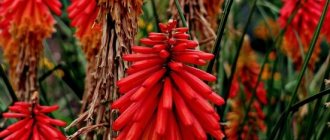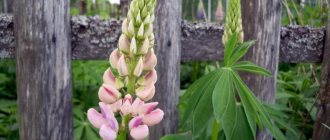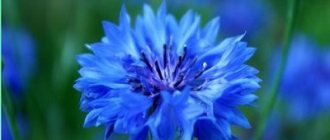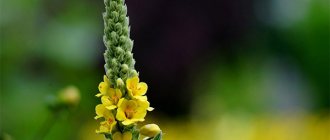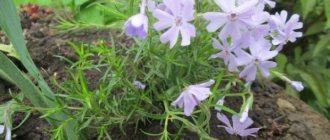The evergreen perennial plant Armeria in its natural state lives on the northern coasts of the seas and oceans. Its pink fluffy flowers look beautiful in rock gardens and flower beds. The plant's lush cushions transform into a colorful carpet. There are many varieties on the market with delicate flowers of different colors that bloom profusely in May and June. Under favorable conditions, the plants bloom until October. How to grow Armeria Primorica - planting and care, photos of interesting varieties are presented in this article.
2.Description of the flower
Armeria are attractive flowering low growing herbaceous plants. This genus includes about 90 species with spectacular flowering.
The root system is taprooted and lies shallow.
The leaves are linear, dark green or bluish green, reach a length of 10 cm, collected in a basal leaf rosette. The leaf blades are entire, sessile, rigid, slightly bent along the central vein.
During the flowering period, the bushes throw out erect, leafless peduncles , at the tops of which there are rounded inflorescences with small bell-shaped flowers . The surface of the peduncles may be smooth and glossy, or may have short silvery pubescence.
The buds can be painted in white, pink or lilac shades and reach a diameter of 5 mm. Varieties with blue flowers are rare.
↑ Up,
Height . This attractive flowering perennial reaches a height of only 15 - 50 cm and develops quite slowly.
↑ Up,
Growing from seeds
The seed propagation method is not too complicated . A florist who has grown seedlings at least once can easily cope with this task.
Sowing
To plant seeds, choose wide and shallow containers with drainage holes to remove excess moisture or small individual pots. The container is filled with loose soil.
Suitable universal soil for seedlings mixed with peat or a substrate made of garden soil, peat and calcined river sand.
Advice! Before planting, seeds should be soaked for a couple of hours in warm water to swell.
There is no need to plant deeper than 5 mm. The seeds are sprinkled with a little soil and moistened with warm, settled water from a spray bottle.
The containers are covered with glass or cling film and placed in a warm, well-lit place for germination. The shelter is removed daily for 10–15 minutes for ventilation, and if necessary, moisten the soil. After germination, the film/glass is removed.
Seedling
Typically, seedlings appear by the end of the second week after planting .
Caring for armeria during this period consists of maintaining a constant temperature, timely watering and sufficient lighting.
After 2-3 true leaves appear, plants from a common container are picked into separate pots . Sprouts originally planted in pots do not need picking.
The key to successful adaptation of armeria in the ground will be hardening 2–2.5 weeks before planting .
Containers with pots are taken out to the balcony or terrace every day, each day slightly increasing the time the plantings spend in the fresh air.
3.When does Armeria bloom?
The buds form during the spring months - most often in April. It is difficult to indicate specific flowering dates - they will depend on external factors. Interestingly, individual inflorescences can appear throughout the summer.
With proper and timely pruning, re-blooming often occurs in the autumn months.
↑ Up,
4.Planting and care in open ground
4.1.When and how to plant
To grow outdoors, you should choose an open, sunny location. Flooded lowlands and places with surface groundwater are not suitable for planting. The perennial will feel best on hills and hills. It is better to place coastal varieties in close proximity to any artificial or natural body of water - such plants need high air humidity. However, in this case, it is worth paying attention to the fact that the area should not be flooded.
Armeria seedlings are planted in mid-May, when the last night frosts are behind us.
↑ Up,
The area is first dug up and some well-rotted organic matter is added to the soil as top dressing. Holes are prepared for planting and placed in accordance with the diagram. The planting holes should not be placed too close to each other - between the bushes of the armeria it is worth leaving a distance of 20 - 40 cm. The fact is that the flower loves ventilated areas, and if kept too crowded, the plants will rot.
The depth and width of the planting holes should be slightly greater than the root ball. A day before planting, the seedlings are watered abundantly and they try to transfer them to a new place of residence by transshipment - keeping the lump at the roots undestroyed.
↑ Up,
When planting, the bushes should remain at the same depth at which they were in the cups. Deepening the root collar of plants can lead to rot. After transferring, the soil around the plants is lightly tamped with your fingertips and watered.
The bases of flowers can be mulched with a small layer of sawdust or bark - this measure will retard the development of weeds. Instead of sawdust, you can use pine needles - it will make the soil pH slightly acidic and serve as additional nutrition. The layer of mulch should not exceed 2 - 3 cm, otherwise it will inhibit the evaporation of moisture and the root system of the flower may rot.
With proper planting, the first buds of the strongest plants may appear already this year, but most bushes will decorate themselves with flowers next year.
↑ Up,
4.2.Soil
Armeria is extremely undemanding to the composition of the soil, because in nature it often grows in rock crevices, where there are very few nutrients. Prefers to grow in slightly acidic or neutral soil that does not contain lime. The flower does not like alkaline soil - the pH of the soil in such areas should be adjusted. In order to get acidic soil, you should spill it with a solution of acetic or citric acid, add ammonium nitrate or mix in pine needles.
Before planting the plant, it is worth mixing a sufficient amount of river sand or even small pebbles into the ground - this will help increase the permeability of the soil.
↑ Up,
4.3.Caring for armeria in the garden
In the first days after planting, the soil is periodically moistened so that the bushes quickly adapt to their new conditions.
Plants that have already taken root in a new place require minimal attention and care. Armeria will tolerate drought better than excess moisture - water it only in case of prolonged hot and dry weather. After watering, the soil surface should be carefully loosened and weeds should be removed under the bushes.
The flower easily tolerates soils poor in nutrients and practically does not need additional nutrition. Excess fertilizer, on the contrary, can cause negative changes in appearance - foliage will form, and flowering will become scarce. In addition, overfed bushes will become more vulnerable to harmful insects and fungal diseases.
↑ Up,
4.4.Fertilizer
Armeria requires a minimal amount of nutrients, so it is fed extremely carefully. In the first year after planting, the flower will have enough of the nutrients that were added to the planting holes.
In the second and subsequent years, it is enough to feed the plants once a month with mineral fertilizers for flowering plants or well-rotted organic matter. Mineral fertilizers should be diluted to half the dose recommended on the package.
Leaf and turf humus, cow or horse manure, and a solution of chicken manure can be used as organic fertilizers.
↑ Up,
4.5.Wintering in the garden, pruning
First of all, when pruning, it is worth promptly removing fading inflorescences, cutting them off at the base with a sharp sterile pruner. This measure will not only maintain an attractive appearance, but will also direct the plants’ forces to form new buds, and therefore the flowering period will be longer.
In the second half of summer - in the fall, the leaves on the bushes will dry out - they must also be trimmed.
Wintering in the open ground is quite easy and in the conditions of the Middle Zone the flower overwinters without shelter. Additionally, it is worth preparing the bushes for the onset of the first frost in harsh regions with little snow. It is also imperative to organize a shelter for armeria turf - these plants may not be able to withstand severe frosts.
↑ Up,
In the fall, the plants are earthed up by sprinkling the root system with soil and covering the top with leaf litter or pine spruce branches. Instead of spruce branches and dry leaves, you can use ordinary non-woven agricultural material as a cover. Remove the cover as soon as the first spring sun warms up.
The main danger during wintering is not the frost itself, but the abundant moisture that appears in the spring when the snow cover melts - the bushes can simply get wet at this moment.
↑ Up,
Care
Thanks to fertilizer, the petals of Armeria will be especially bright and the flowering will be abundant.
The apparent ease of care can play a cruel joke on gardeners, since some varieties are sensitive to lack of moisture and begin to shed even unformed flowers. Therefore, regular watering is of great importance.
Watering
You need to monitor the soil. If it starts to dry out, water it, but not too much, otherwise the roots will rot. In relatively rainy summers, you can avoid watering altogether.
Top dressing
If the soil is weak, fertilizing with mineral and organic fertilizers can be carried out a week before flowering; there are enough preparations for flowering crops on sale. But immediately before flowering, feeding is required.
Recent Entries
Chainsaw or electric saw - what to choose for the garden? 4 mistakes when growing tomatoes in pots that almost all housewives make Secrets of growing seedlings from the Japanese, who are very sensitive to the soil
Then the procedure can be repeated every one and a half weeks.
Trimming
It must be produced after flowering, but it is advisable to remove buds that begin to fade immediately, otherwise the plant will waste its energy. Yellowed stems are also removed immediately.
This pruning will allow the armeria to bloom again in the fall after flowering in summer. This phenomenon occurs frequently.
Every 5 years, the plant must be replanted or moved to another place, otherwise the bushes become too dense and more leaves are formed on them than buds.
Wintering
Most varieties and subspecies tolerate winter calmly if frosts in the climatic zone do not reach -15°C. Otherwise, the sprouts should be covered with spruce branches, leaves or porous fabric. Only the turf army needs to be covered in any zone; it is afraid of any cold.
5.Reproduction
5.1.Growing Armeria from seeds
This perennial can be grown quite easily from seeds. When kept in a garden plot under mature plants, self-seeding often occurs.
For seed propagation, you can use your own collected planting material. To form seeds, one or more flower stalks are left on the plant until fully ripened. To prevent the seeds from leaving the inflorescence on their own, you should wrap it in a bandage or wear a simple thin sock.
↑ Up,
After ripening, the seeds are collected and lightly dried in a warm and well-ventilated room for 2 - 3 days. Store seeds in fabric bags or paper bags in a dry place.
When propagating varietal plants, the resulting daughter rosettes may not inherit all the attractiveness of their parents - they should be propagated vegetatively - by division or cuttings. Species plants reproduce successfully with the help of seeds.
Planting material can be planted either directly in open ground or as seedlings at home. Before sowing, Armeria seeds are soaked in warm water with the addition of growth stimulants overnight.
↑ Up,
5.1.1. Sowing in open ground in autumn
When sown directly outside, the seeds will undergo additional stratification under natural conditions. For sowing, it is worth choosing a time so that the first shoots do not have time to appear before the onset of frost. The best month for landing in the Middle Zone will be November.
A small plot of land is loosened and shallow furrows are prepared, where the seeds are sown. The planting material is covered with a small layer of soil on top and watered.
↑ Up,
During the first warm weeks of next spring, you will notice the shoots of Armeria. When such plants get a little stronger, they are planted.
It is fashionable to try to plant flower seeds in the spring - however, in the absence of stratification, their germination rate will be low.
↑ Up,
5.1.2.Growing seedlings at home
Sowing of seedlings is carried out at the end of winter or early spring - in early March. First, the seeds are placed in the vegetable compartment in the refrigerator for a couple of weeks so that they undergo a period of cool stratification, which will increase their germination.
The germination rate of fresh planting material is high and the plants sprout together. The first shoots, if certain agricultural techniques are followed, can be seen 2 - 3 weeks after sowing.
↑ Up,
For sowing, small cups or peat pots are prepared, drainage holes are made at the bottom and a layer of expanded clay or other drainage material is placed. You can sow in seedling boxes.
Fill the pots with a mixture of peat and river sand, taken in equal proportions. The surface of the substrate is thoroughly moistened using a spray bottle with warm water. Seeds are sown on the surface of the ground and covered with a layer of soil about 5 mm thick.
↑ Up,
Containers with seedlings are covered with a transparent cover to maintain high air humidity and placed in a warm place with good lighting. The air temperature in the room should be about 16 - 20 degrees. Direct sunlight should not fall on young bushes - only reflected light is needed. The cover is removed daily and the condensation that has accumulated on its surface during the day is removed. Gradually the time of such ventilation is increased. With the appearance of the first shoots, the cover is removed completely.
When grown in a greenhouse or container, the plants peak with the appearance of the first 2 - 3 true leaves, carrying the bushes carefully, along with a lump of earth. After planting in open ground, the first flowering will occur in the same year, although it will not be very abundant.
↑ Up,
5.2.Dividing the bush
Adult bushes of armeria are periodically rejuvenated by division - the fact is that overgrown plants over time can expose the center and become unattractive. Plant division is the simplest and most effective method of propagating this bush and is carried out on average every 3 to 5 years.
↑ Up,
The division is carried out after flowering - the bushes are dug up along with a lump of earth, then the root system is shaken off from the remaining soil. The roots are carefully examined and old and diseased sections are removed, and in this case the wound surface is sprinkled with charcoal powder or wood ash. Plants are cut into pieces in such a way that the result of this procedure is strong divisions with their own roots and a well-developed above-ground part.
Next, the young plants are planted and they begin to care for them like other armeria. Dividing can also be done in early spring - however, this may affect flowering in the current year. In the spring months, the flower will take root in a new place, and the first buds will appear only in the fall.
↑ Up,
5.3.Propagation by cuttings
In this case, young root rosettes are used as cuttings, which from time to time will form near the mother bushes. Such rosettes can be carefully separated from the main plant even when they do not have their own roots.
Rosettes are planted in small cups with soil or directly into the ground, however, in the first weeks before the formation of the root system, such plants will require careful care. The bushes are lightly sprinkled with soil, which is kept evenly moist but not waterlogged throughout.
To create a greenhouse effect, the flowers are covered with a plastic cap, which is removed daily and the outlets are ventilated.
After some time, the first signs of new growth can be seen on such specimens - this will mean that the first roots have appeared under the ground.
↑ Up,
Autumn care, seed collection and wintering
Wilted inflorescences should be removed immediately after flowering. You need to leave only those flowers from which you plan to collect seeds. Although armeria reproduces well by self-sowing and dividing the bush. If you need to collect seeds, then the selected flowers, when they begin to fade, need to be tied with gauze. This will prevent the seeds from falling to the ground. When the seeds are ripe, they are poured onto paper and cleaned of impurities. They should be dried for some time and sown in the ground for the winter, or stored in a paper bag until spring.
Armeria overwinters under the snow; there is no need to dig it up. In southern and snowy regions there is no need to additionally cover the bushes. Soddy armeria must be hilled. Also, if winters are frosty and have little snow, then the plants need to be covered with spruce branches or peat. It is important to ensure that there is no accumulation of moisture near the armeria during the winter. This can lead to the death of the root system.
6.Armeria transplant
In the same place, armeria can develop over a long period of time - bushes can reach 7 - 10 years. Such mature plants often lose their decorative properties - flowering becomes less abundant, and the middle of the bush may simply become bare.
In order to rejuvenate such specimens, they are dug up, divided and transplanted to a new location every 3 to 5 years.
A similar transplant is carried out in the last weeks of summer or in the fall - after complete flowering.
When working with a flower, you should be careful - the sharp edges of the leaves can easily injure your hands. When transplanting flowers, protect them with gloves first.
↑ Up,
Feeding and replanting
Even a novice florist can plant and care for armeria. The plant needs feeding, which ensures regular and lush flowering.
Feeding is carried out at intervals of 1.5 months. Complex mineral fertilizers are used. The prepared solution should be poured into the ground instead of water.
Recommended preparations for feeding:
- "Poligro Universal" - contains potassium and nitrogen, magnesium and phosphorus, a number of microelements.
- “Humate +7 iodine” – includes a standard set of mineral elements, additionally containing iodine, humic acids and sulfur. The drug helps to activate and strengthen the immune system.
- “Fertika Lux” is one of the most popular fertilizers, which contains all the mineral and nutritional elements necessary for the plant.
Additional Information! If the soil is peaty, you can feed the plant at intervals of 2.5-3 months. Peat soil, even without fertilizers, is enriched with essential minerals and nutrients.
Replanting is an important nuance in flower care. The first division of the bush is carried out when it turns 5 years old. The bush is divided into several parts, each of which is planted in a new place. In the future, transplants are carried out once every 2-3 years. If this is not done, the flower will become overgrown and lose its attractiveness.
7.Use in landscape design
When grown in the garden, Armeria can be used as a border or ground cover plant. The flower can decorate the rocky slopes of alpine hills and form a beautiful edging in a flower bed or flower garden.
When grown as a ground cover plant, the bushes of Armeria are placed quite densely when planted - in this case, it forms a continuous grassy mat.
A combination of armeria with such low perennial plants as saxifrage, arabis, aubrieta, and cotula will look great. You can also plant daisies, outdoor varieties of sedum and thyme, and phlox subulate nearby.
Armeria is an evergreen plant and emerges from under the snow with green leaves, which is why it is able to decorate the garden plot during all warm months - from the melting of the snow cover to the fall of snow.
↑ Up,
Armeria after flowering
How and when to collect seeds
There is no point in collecting seeds if armeria is already growing on your site - it reproduces well by self-sowing. In addition, an obligatory element of plant care is dividing the rhizomes and planting cuttings, so that you will always have plenty of planting material, and the sowing material sows itself.
If you want to share your armeria with someone, you can give away part of the cuttings when transplanting or cut cuttings. But if you absolutely need to have seeds, tie the fading inflorescence with gauze so that the ripened seeds do not fall to the ground, and when the inflorescence is dry, cut it off, shake the seeds onto a newspaper, clean them from the remains of the flowers and, after drying, pour them into a paper bag.
- Evening primrose (oslinnik): growing in the garden, types
Perennial armeria in winter
Armeria is a frost-resistant plant and can easily survive the winter without shelter, especially if there is a lot of snow in winter. The only exception is the soddy armeria, which must be covered. Dry peat, spruce branches and non-woven materials are used for covering. If, according to forecasts, the winter is expected to be snowless, it is better to cover other types of armeria with spruce branches: they will be warm and you will be at peace.
9.Note, interesting facts
In people prone to allergic reactions, Armeria pollen can cause an attack.
Early and abundant flowering will attract bees and other beneficial insects to the site - in this case, the bushes will become excellent honey plants.
Peduncles with attractive buds can be cut as soon as the flowers begin to bloom and placed in a vase with water - when cut, they will not lose their attractiveness for 7 - 10 days. Also, dried flowers obtained from this plant will decorate the interior for 1 - 2 years.
↑ Up,
In order to obtain dry inflorescences, the flower stalks are cut when approximately half of the buds are open, then collected into small bunches and tied with twine. The bunches are hung under a canopy or placed in a warm, well-ventilated place. It is worth making sure that such bunches are not exposed to direct rays of the sun - in this case, the buds may lose color and burn out.
The compact size of the flower allows it to be grown not only in the garden and country house, but also at home - in ordinary flower pots.
↑ Up,
Interestingly, the very name of the flower is associated with its place of growth in nature - it comes from the Celtic phrase “ar” and “mor” - near the sea. Some botanists believe that the generic name comes from the French language, where the word “armoires” meant bearded carnation, similar in appearance to our flower.
Sometimes, over time, a species of Armeria begins to behave like a weed—they begin to self-sow abundantly and divide. To grow such species, it is worth choosing a site where it will not interfere with other plants or limit planting using a special garden border or buried slate, and cut off the inflorescences immediately when they wilt.
↑ Up,
Pest and disease control
Due to the fact that armeria grows in dense, continuous carpets, it often suffers from diseases and pests. Moreover, you need to act almost instantly, because the infection spreads quickly.
During snow melting, after prolonged rains or too intense watering, fungus, spotting and root rot develop. If you manage to notice the problem in time, fungicides will help. If not, it is better to remove diseased plants by the roots.
The most dangerous pest is aphids, which destroy leaves and bring diseases with them. Many gardeners treat armeria with insecticides not only for treatment, but also in advance for prevention.
Photo: nn.ru
Pushkinia (60 photos): types, planting and care in open ground
10.Varieties and types of armeria:
10.1. Alpine Armeria - Armeria alpina
An alpine species that prefers to settle on alpine slopes, at an altitude of 1500 to 3000 meters above sea level. These compact herbaceous plants reach a height of only 10 - 25 cm and during the flowering period, which occurs in late spring or in the summer months, they decorate themselves with large and bright inflorescences with pink buds.
↑ Up,
10.2. Armeria pseudarmeria
Plants of this species reach a height of 30–35 cm and have fairly wide, hard leaf blades. Peduncles are strong, vertical. The inflorescences are very large and bright - they begin to appear in the spring and again in the autumn. The buds can be colored purple, white, red or pink. Some cultivated varieties have been bred based on this variety.
↑ Up,
10.3. Seaside or magnificent Armeria - Armeria maritima
The most common type of armeria in floriculture is a flowering perennial that grows naturally in the coastal zone of Europe and North America. The bushes reach a height of 15 - 30 cm and form a basal rosette of dark green, hard leaves at the base. Numerous flower stalks appear in spring.
↑ Up,
10.4. Bulbous Armeria - Armeria alliacea
A Mediterranean plant of compact size - often the bushes do not exceed 15 - 20 cm in height. This variety will decorate the garden not only during flowering - after the flower stalks are cut off, attractive round-shaped herbaceous hummocks remain in the flowerbed.
↑ Up,
10.5. Armeria Welwitschii - Armeria welwitschii
An interesting feature of these plants is that in nature they are located no further than 250 m from the sea coast. The bushes reach a height of 30 cm, have soft, green leaves at the base and thin peduncles. The inflorescences are small and graceful.
↑ Up,
10.6. Armeria pungens
The tallest species - this herbaceous perennial can grow up to 80 cm and forms large, lushly flowering bushes. The leaf blades are linear, reach a length of 15 cm, and are colored dark green. Large inflorescences bear several dozen bright pink flowers.
↑ Up,
10.7. Soddy or juniper-leaved Armeria - Armeria juniperifolia, Armeria cespitosa
Evergreen perennials of a compact, round shape, 15 - 30 cm high. The variety is distinguished by very abundant flowering - in late spring or early summer, the inflorescences can completely hide the foliage.
↑ Up,
